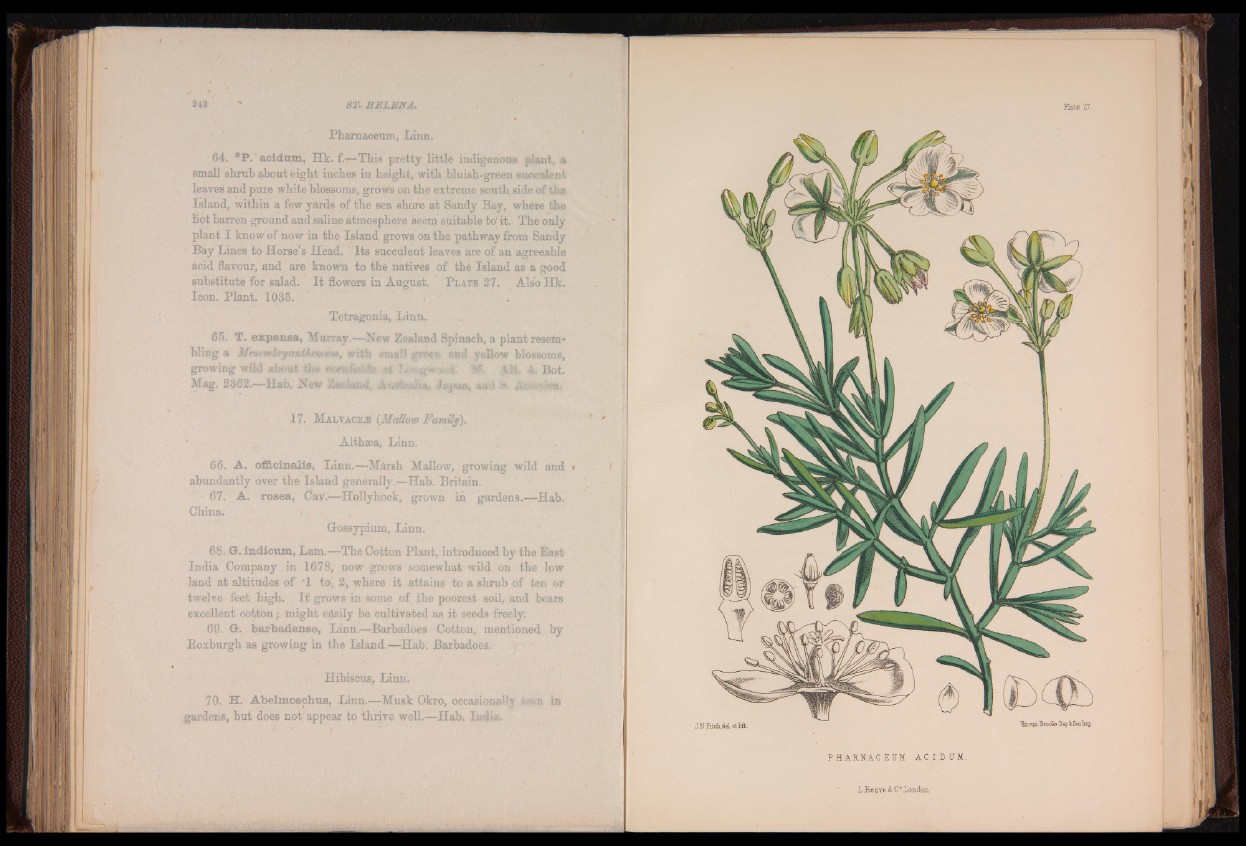
Phamaoeum, Linn.
64. *P.'acidum, Hk. f.—This pretty little indigenous plant, a
small shrub about eight inches in height, with bluish-green succulent
leaves and pure white blossoms, grows on the extreme south side of the
Island, within a few yards of the sea shore at Sandy Bay, where the
hot barren ground and saline atmosphere seem suitable to' it. The only
plant I know of now in the Island grows on the pathway from Sandy
~ Bay Lines to Horse’s Head. Its succulent leaves are of an agreeable
acid flavour, and are known to the natives of the Island as a good
substitute for salad. I t flowers in August. P l a t e 27. Also Hk.
Icon. Plant. 1035.
Tetragonia, Linn.
65. T. expansa, Murray.—New Zealand Spinach, a plant resembling
a MetembryaatAemum, with small and, yellow blossoms,
growing wild about the ftorsik<i4«. «■' M- AK- 4. Bot.
Mag. 2362.—Hab. New Zealand, Atatsuha» 4«pan, *&>i A A&jWr«»,
1 7 . M a lv a c E j® ' (Mallow Family) .
Althaea, Linn. ^ -
66. A. officinalis, Linn.—Marsh Mallow, growing wild and ■
abundantly over the Island generally.—Hab. Britain.
1 67. A. rosea, Cav.—Hollyhock, grown in gardens.—Hab.
China.
Grossypium, Linn.
68. G. indicum, Lam.—The Cotton Plant, introduced by the East
India Company in 1678, now grows somewhat wild on the low
land at altitudes of -1 to, 2, where it attains to a shrub of ten or
twelve feet high. I t grows in some of the poorest soil, and bears
excellent cotton; might easily be cultivated as it seeds freely.
69. G. barbadense, Linn.—Barbadoes Cotton, mentioned by
Roxburgh as growing in the Island.—Hab. Barbadoes. :
Hibiscus, Linn.
70. H. Abelmoschus, Linn.-—Musk Okro, occasionally ■ - ¡rn in
gardens, but does not appear to thrive well.—Hab. India. liacnatBroote J.N Pitch,¿Led etlith. Bay ¡¡sSmlinp.
PHARRACEUM AC IB UM.
L.Re eye & C? London.